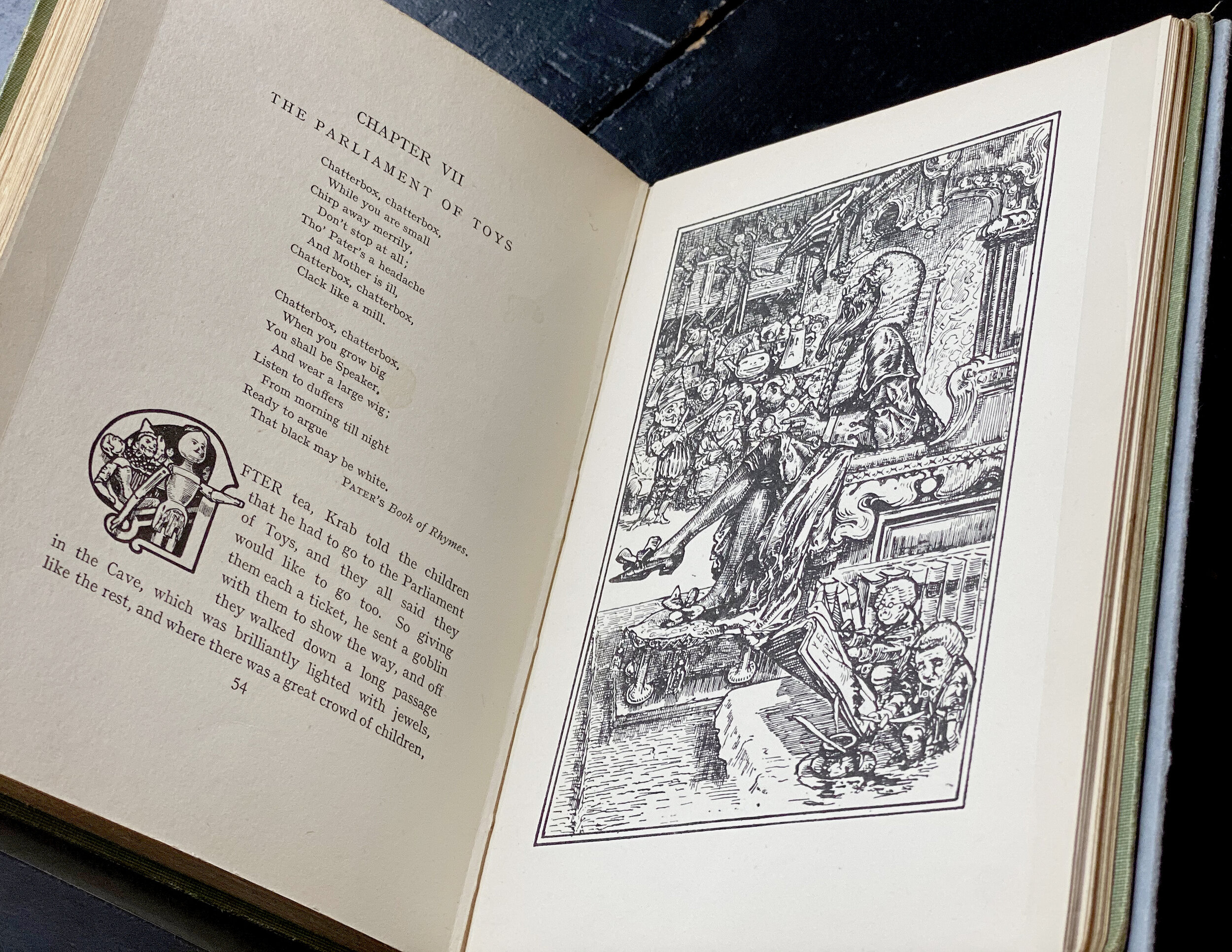The History of Don Quixote,
Miguel de Cervantes Saavedra, illustrated by Gustave Doré, 1868 (first published in Spanish 1605-1615)
There are not too many rules in the Portico, but we do ask everybody not to touch the fragile books without help from staff. Playing racket sports with them, like the devils in this illustration, is definitely not allowed! Luckily, this scene only occurred in a dream, in a book, written a very long time ago.
In the scene illustrated below, a devil remarks that among the books being struck is a volume of The History of Don Quixote itself, and that it should be hurled down into hell. Cervantes often played games like this with his readers, stepping outside his stories to reflect on the process of writing itself.
The History of Don Quixote, Miguel de Cervantes Saavedra, illustrated by Gustave Doré, 1868.
Katawampus,
Edward Abbott Parry, illustrated by Archie MacGregor, 1895
In 1900, Manchester judge Edward Abbott Parry published a new version of Don Quixote in collaboration with illustrator Walter Crane, whose drawings popularised the ‘child-in-the-garden’ motif of early-20th-century children’s books.
Parry carried his ideas about justice and proper behaviour into his writing for children. ‘Katawampus’ is an invented condition characterised by “too much crying”.
Illustration of “The Parliament of Toys” by Archie MacGregor, from Katawampus.




